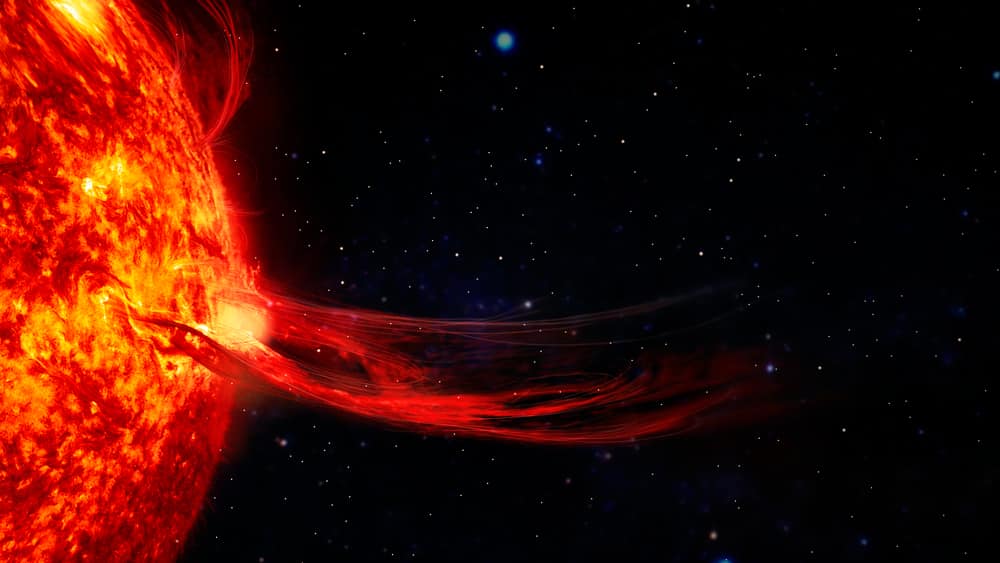A massive, “full-halo” solar storm is headed towards Earth, and is due to hit our atmosphere on July 23. According to SpaceWeather.com, a solar tsunami eruption on July 21 flung a cloud of solar plasma and other solar particles in our direction, and when they hit the Earth, they will cause geomagnetic storms.
This type of solar storm is known as a coronal mass ejection (CME), and usually occurs in the most active areas of the sun where the magnetic fields are especially strong. When twisted magnetic field lines on the Sun suddenly reconfigure themselves, the Sun spits out huge plumes of plasma.
The matter ejected from the sun in a CME can contain billions of tons of particles from the sun’s atmosphere and also carry an embedded magnetic field: large and fast CMEs can travel at speeds of up to 4.5 million miles per hour. CMEs are normally harmless to humans, as the majority of the time they aren’t pointed at Earth.
The “full-halo” CME that occurred on July 21 is, however, expected to hit the Earth’s magnetic field. Halo events are so-called because of the way they appear in coronagraph imagery, seemingly flaring out around the sun like a halo. “Full-halo” CMEs are aimed at the Earth, with the entirety of the Sun’s circumference appearing to glow.
According to NOAA data, the resulting geomagnetic storm in our magnetosphere is likely to be G1- to G2-class (minor to moderate), although there is a slight chance of the storm escalating to become category G3 (strong).
Solar storms range between G1 and G5 in strength, with G5 being the most powerful. While G1 storms are very common, more powerful storms are much more rare. “[G1 storms] don’t have any serious effects. G5 storms can have serious effects. But we haven’t had a G5 since October 2003,” Mike Hapgood, a Principal Consultant on Space Weather at STFC Rutherford Appleton Laboratory, told Newsweek.
















